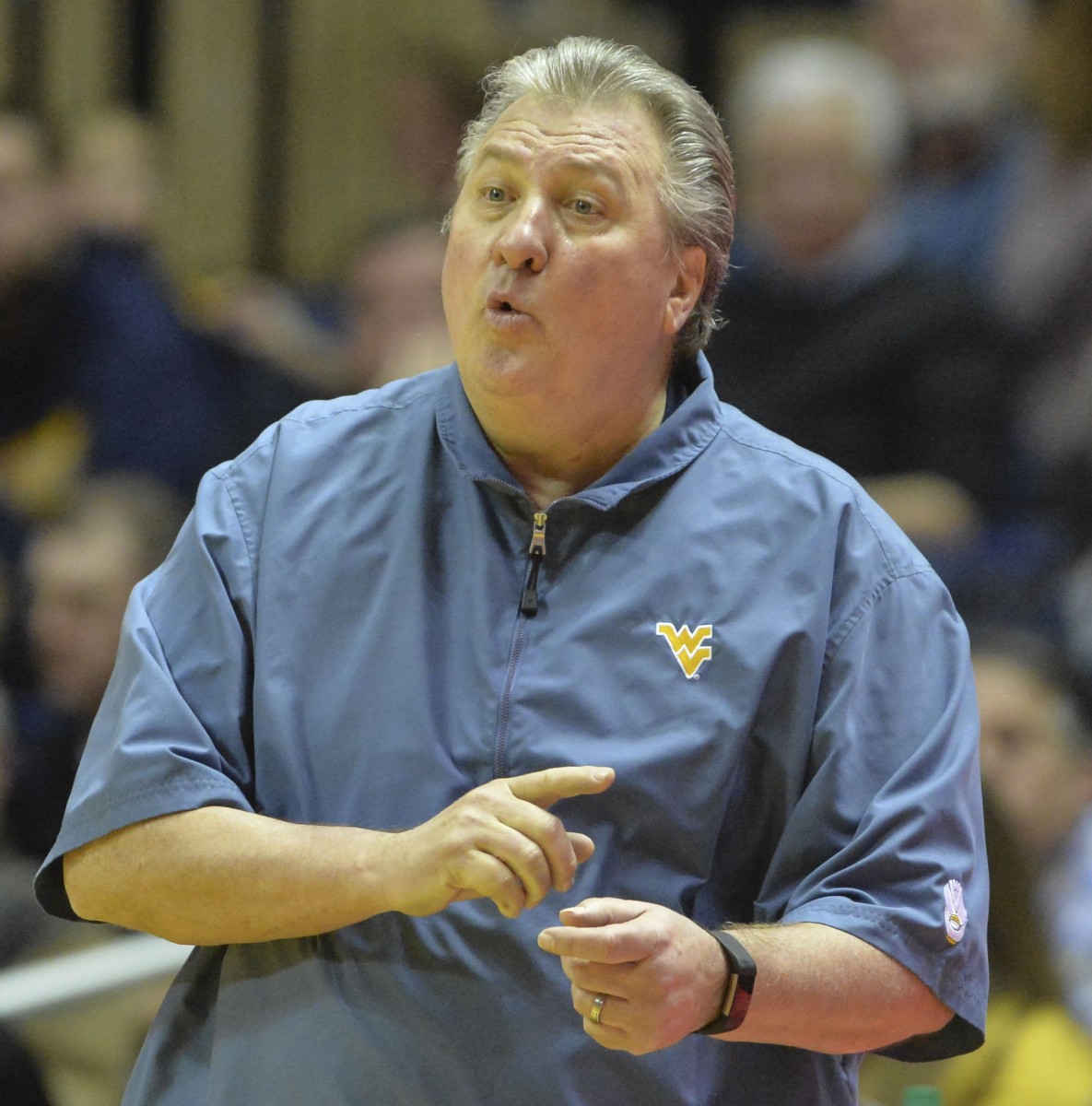MORGANTOWN, W. Va. — Having long ago lost patience for his team’s defensive miscues well before West Virginia lost two of its top players last week, Bob Huggins did not hold back.
“We haven’t defended all year,” Huggins said following the Mountaineers’ 78-53 loss at Kansas on Saturday. “We’re horrible. This is the worst defensive team that I think I’ve ever had. We don’t put any pressure on the ball. We don’t get to the ball. We don’t handle screens very well. We don’t do much right, to be honest.”
Playing its first game without forwards Wes Harris and Esa Ahmad, who were dismissed last week for a violation of athletic department policy, West Virginia moved 6-8 forward Lamont West to a power forward, forcing him to guard Kansas’ Dedric Lawson, who is 6-9 and 13 pounds heavier than West’s 222 pounds.
“I always felt like I could guard a [power forward],” West said. “To be honest, I always thought of myself as a [power forward]. You just have to play hard and I feel like I can guard anybody.
“We’ve just got to get used to playing with what we got.”
The Mountaineers tried to make other adjustments, such as playing both Derek Culver and Drew Gordon at the same time, giving the Mountaineers more size and bulk on the floor.
Emmitt Matthews Jr. picked up his first collegiate start in what Huggins hoped would give the Mountaineers another athletic defender on the perimeter.
In truth, there is no longer enough depth, talent or experience on WVU’s roster to make up for the loss of Ahmad and Harris, not to mention the injured Sagaba Konate and Beetle Bolden, who both watched the loss from the Mountaineers’ bench.
There are not enough Xs and Os to be drawn up on the chalkboard to cover up West Virginia’s lack of defensive pressure.
“The biggest thing is those two guys rebounded it for us,” Huggins said. “If you look at the game situations, Esa and Wes made big rebounds. The other things we can kind of try to fill in, but we lost probably our second and third best rebounder. Derek is our first, but they were all playing together. Now, we’re playing him and he’s really young and we’re playing Lamont [as a power forward] and he’s really been a [small forward] for his career. We tried to play big, but that didn’t work out very well.”
Now, the Mountaineers (10-15, 2-10 Big 12) head right back out to face the team that just may have opened the book this season on the Mountaineers’ lack of defensive awareness in No. 18 Kansas State (19-6, 9-3).
While the Wildcats’ 71-69 victory against WVU on Jan. 9 doesn’t appear to be a defensive blowup, Kansas State shot 62 percent and scored 50 points in the second half to erase a 21-point deficit to pull out the victory.
WVU hosts Kansas State, at 9 p.m. Monday in the rematch.
“If we didn’t play again for another week, we could really break down this game,” West Virginia guard Chase Harler said. “Now, we just have to get ready to play on Monday. Hopefully we come out with more energy. We’ll need better offense and work on defense and try to get the win on Monday.”
As for West Virginia’s worst defense under Huggins, that is a possibility.
The best comparison would be the 13-19 season Huggins and the Mountaineers endured during their first season in the Big 12, in 2012-13.
That team finished 13-19 and struggled down the stretch with seven consecutive losses.
The 2012-13 team did hold opponents to under 70 points per game (68.1).
This season, WVU is allowing 75.4 points per game and has allowed 80 or more nine times.
“If we go out there and do what we need to do, we should be all right,” West said. “We’re not playing as hard as we should and we’re letting teams get out in transition too much.”
Huggins added that West Virginia’s deficiencies go beyond transition defense.
“We had a situation where we were talking to them at a timeout about putting some pressure on the ball,” Huggins said. Brandon Knapper, “does a great job and makes them pick it up at halfcourt and then we let another guy just kind of trot up the sideline and they throw the ball to him. That was before everybody was screaming, “Red, red, red,’ which means don’t let your guys catch the ball. He didn’t have to work to catch it. We let them throw it wherever they wanted. That’s never happened before.”
A comparison of West Virginia’s defensive numbers from the 2012-13 season compared to this season:
2012-13
Points allowed: 68.1 per game
Field goals: 755 of 1687 (44.8 percent)
3-pointers: 213 of 559 (38.1 percent)
20-point (or more) losses: 4
Largest defeat: 34 points at Gonzaga.
Team record: 13-19
2018-19
Points allowed: 75.4 per game
Field goals: 639 of 1432 (44.6 percent)
3-pointers: 182 of 517 (35.2 percent)
20-point (or more) losses: 5
Largest defeat: 31 points at TCU and at Texas Tech.
Team record: 10-15
FOLLOW on Twitter @bigjax3211




